Photography by Deepika Rajesh
Published on 1 July 2025
The Taj Mahal, an architectural marvel and one of the Seven Wonders of the World, stands as more than a testament to Mughal emperor Shah Jahan’s love for his wife Mumtaz Mahal. Its gleaming white marble domes and minarets, set against the Yamuna River in Agra, draw millions of visitors annually, each seeking to capture a piece of its timeless allure. For many Indian households, particularly middle-class families, the Taj Mahal is not just a UNESCO World Heritage Site but the pinnacle of aspirational travel. A popular saying, “Taj Mahal nahi dekha toh kya dekha” (“If you haven’t seen the Taj Mahal, have you really seen anything?”), encapsulates its cultural weight. For countless families, a visit to the Taj is often the only journey taken beyond their hometowns, a pilgrimage of sorts that blends awe, pride, and memory-making into a single, cherished experience.
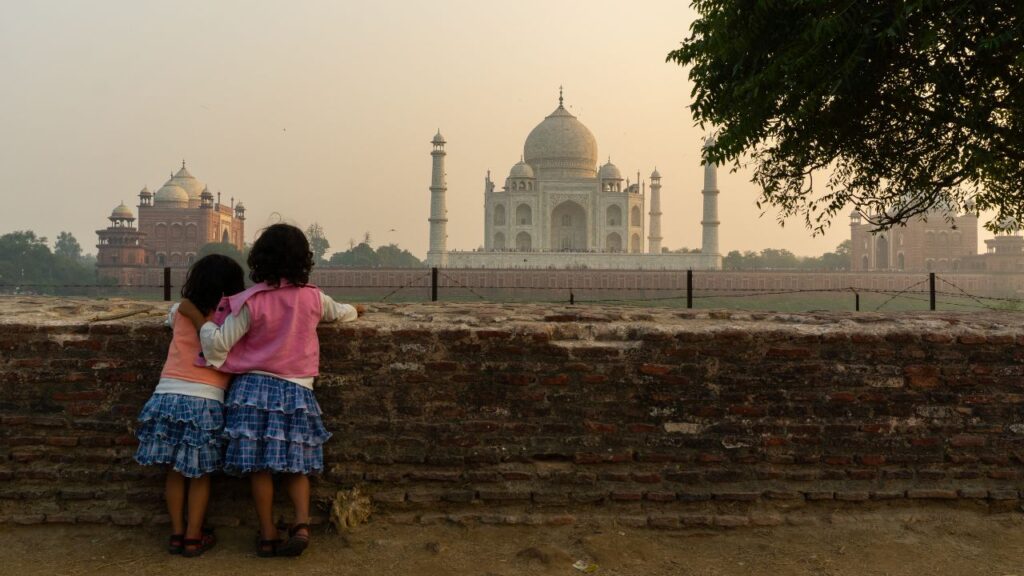
For those growing up in a modest Indian household, it is like a dream to make a trip to the Taj Mahal, to stand before its majestic facade, posing for a photograph that would later sit framed on a shelf- a tangible marker of one’s encounter with greatness. That single image encapsulates not just a moment but an entire narrative: the planning, the excitement, the long train ride, and the overwhelming sight of the monument itself. Across India, similar photographs adorn homes, each one a story of aspiration realized, a shared cultural milestone immortalized against the Taj’s iconic silhouette. Taj Mahal is not merely a monument but a vibrant stage where visitors, locals and foreigners alike, perform, pose, and weave personal memories into a collective tapestry of human experience.
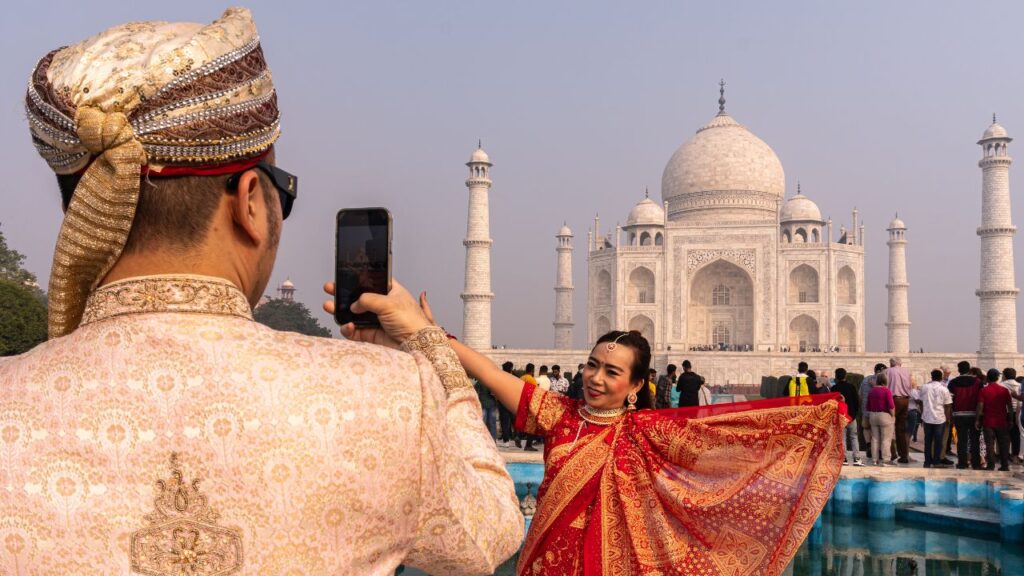
The Taj Mahal’s allure lies in its ability to transcend its historical and architectural significance to become a backdrop for human connection. Built between 1632 and 1653, the monument’s symmetrical perfection and intricate craftsmanship, its inlaid semi-precious stones, delicate jali screens, and soaring central dome, command reverence. Yet, for the millions who flock to it, the Taj is less about its Mughal origins and more about the stories they create within its grounds.
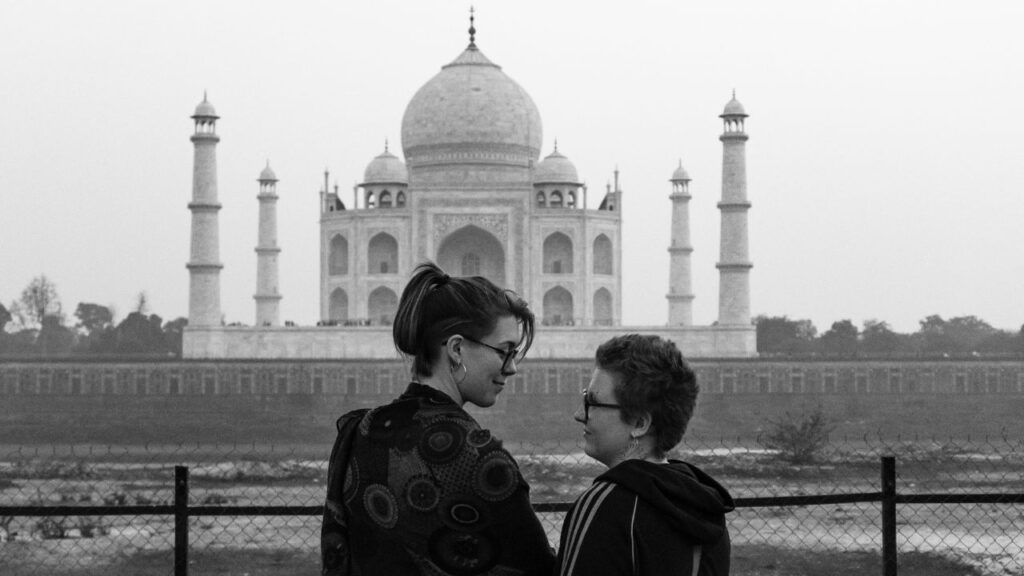
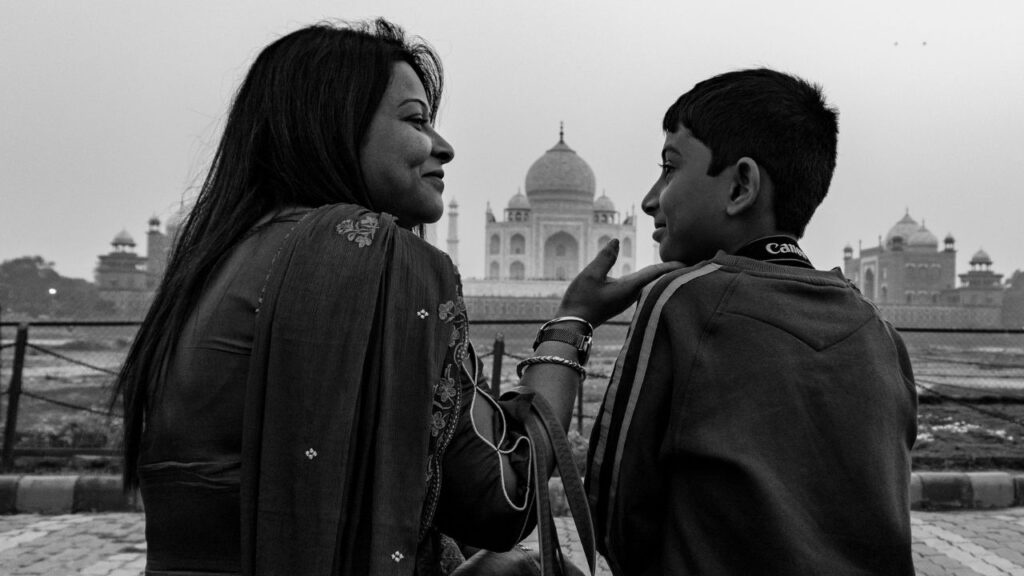

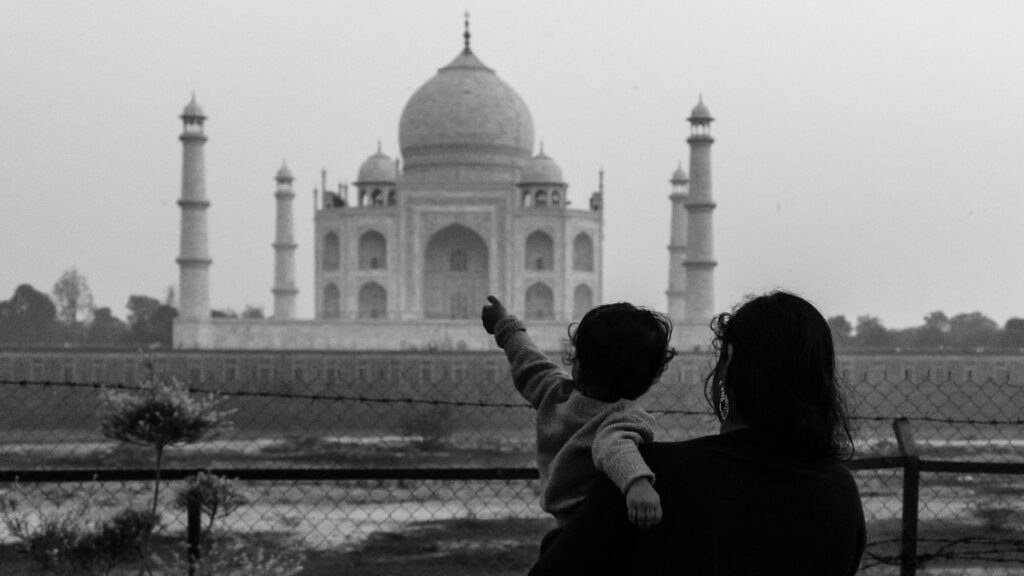
Families, couples, and solo travelers arrive with cameras and smartphones, eager to document their presence. The act of photography becomes a ritual, transforming the Taj into a canvas for personal and collective memory. A young couple might pose shyly, their hands barely touching; a family might crowd together, children squirming, as a parent angles for the perfect shot. These moments, fleeting yet preserved, underscore the Taj’s role as a space where ordinary lives intersect with extraordinary beauty.
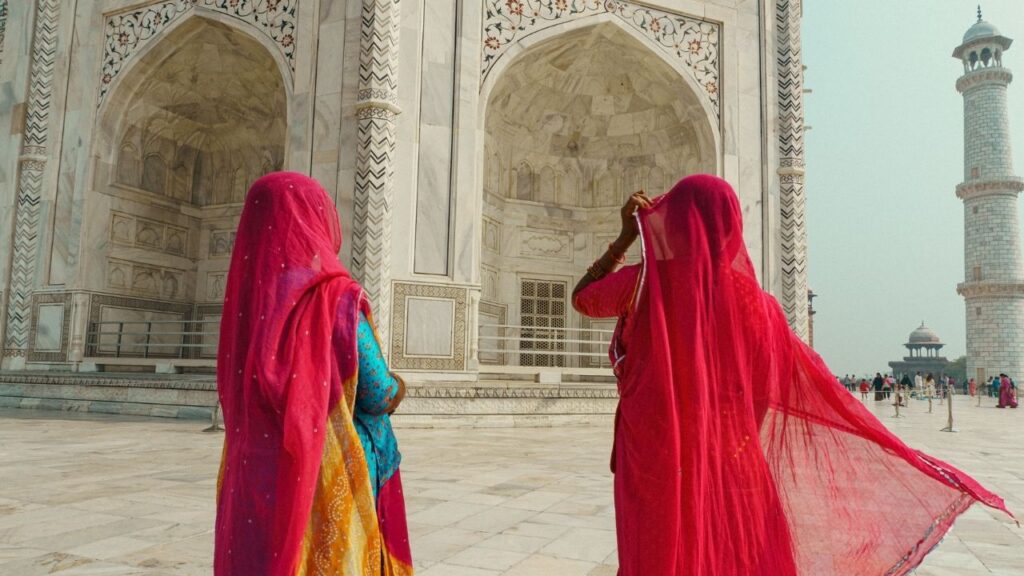
The saying “Taj Mahal nahi dekha toh kya dekha” captures the monument’s place in India’s collective imagination. For middle-class families, travel is often a luxury, constrained by time, money, and opportunity. The Taj, accessible by train or bus from much of northern India, represents an achievable dream. It is a destination that requires no passport, no foreign currency. Just determination and a modest budget. For many, it is the first and sometimes only landmark they visit outside their hometowns, making it a rite of passage. The journey to the Taj is as much a part of the experience as the destination itself: the crowded trains, the roadside dhabas, the anticipation building with every mile. Once there, visitors are not merely sightseeing; they are participating in a cultural act, claiming a piece of India’s heritage as their own.
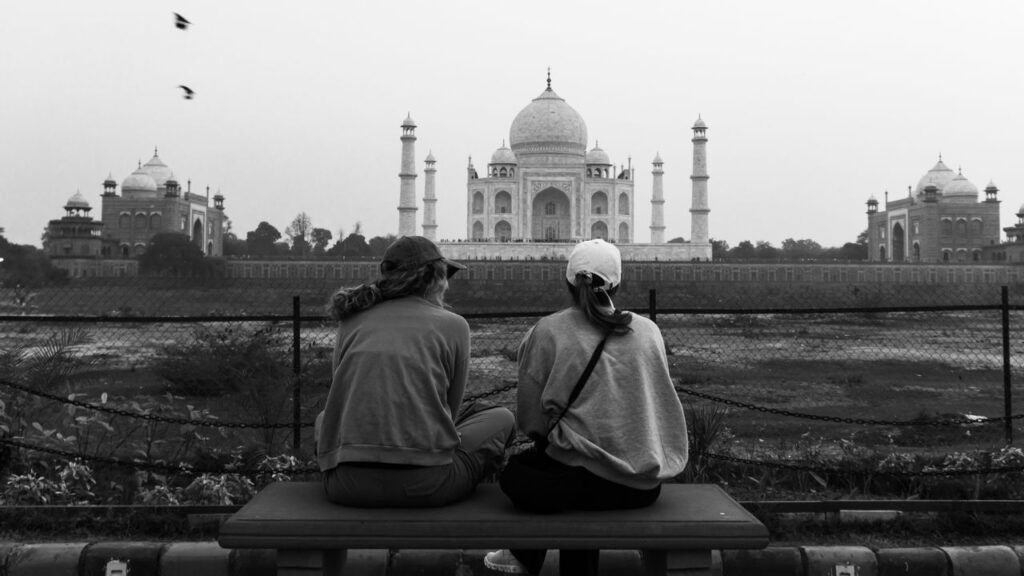
Observing visitors at the Taj reveals a spectrum of human behavior. Some stand in quiet awe, struck by the monument’s grandeur. Others are performative, striking poses inspired by Bollywood or social media trends, hands forming a heart, or arms outstretched as if to embrace the dome. Children chase each other across the lawns, while elderly couples rest on benches, their gazes fixed on the marble facade. Photographers, both amateur and professional, weave through the crowds, offering to capture “the perfect shot” for a small fee. These interactions transform the Taj into a living space, one that accommodates joy, reflection, and even mundane moments of rest. The monument, though static, becomes dynamic through the people who animate its grounds.
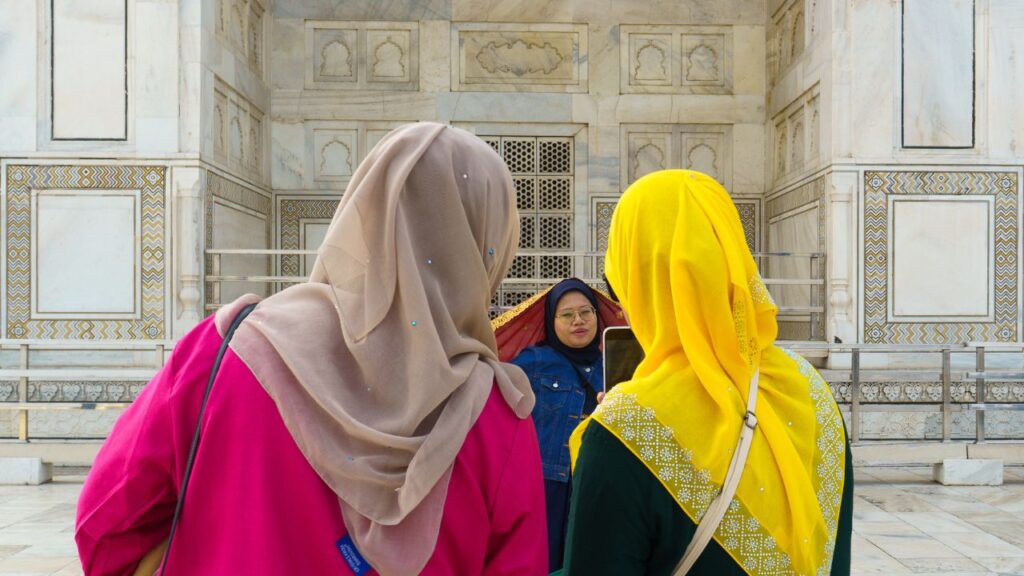
Photography at the Taj is more than a tourist cliché; it is a means of staking a claim to a shared heritage. The iconic bench where Princess Diana once sat, alone and pensive, is now a coveted spot for photographs, with visitors queuing to recreate the image. Yet, for every posed portrait, there are candid moments: a child’s wide-eyed wonder, a couple stealing a glance, a family laughing as they fumble with a selfie stick.
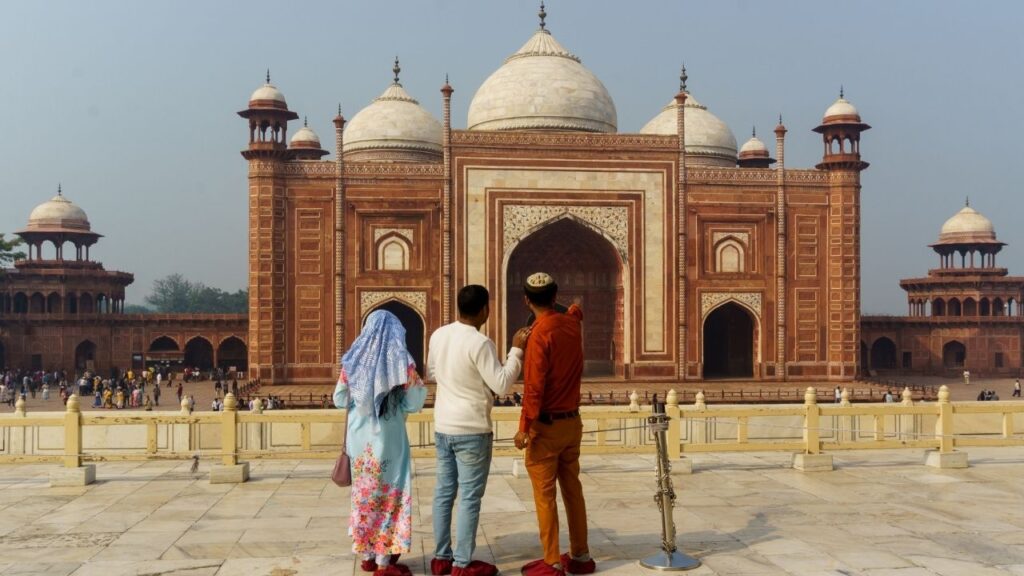
These images, whether carefully composed or spontaneous, become keepsakes that carry the weight of the Taj’s majesty back to homes across India and beyond. They are not just photographs but artifacts of aspiration, proof of having stood before something greater than oneself.
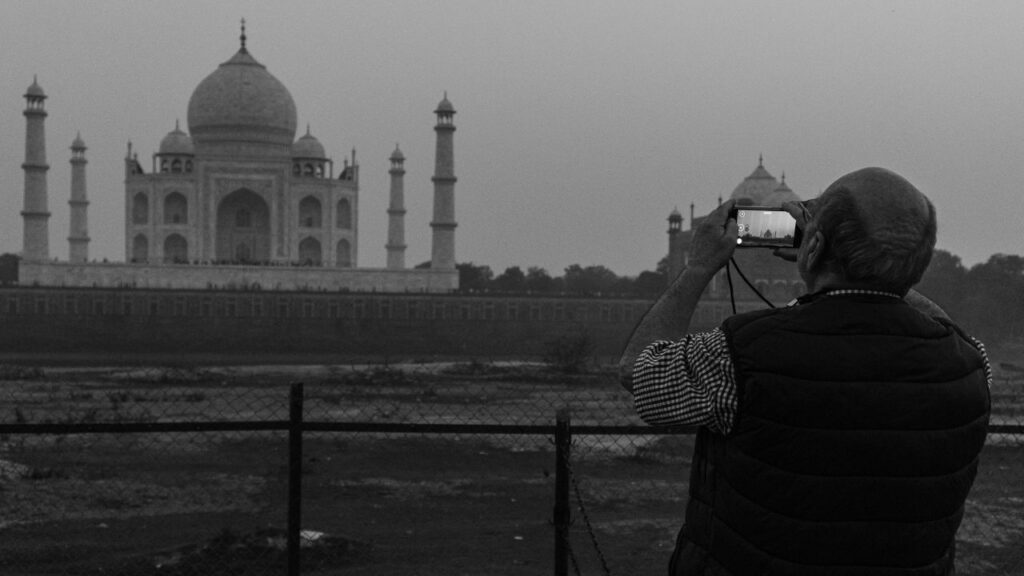
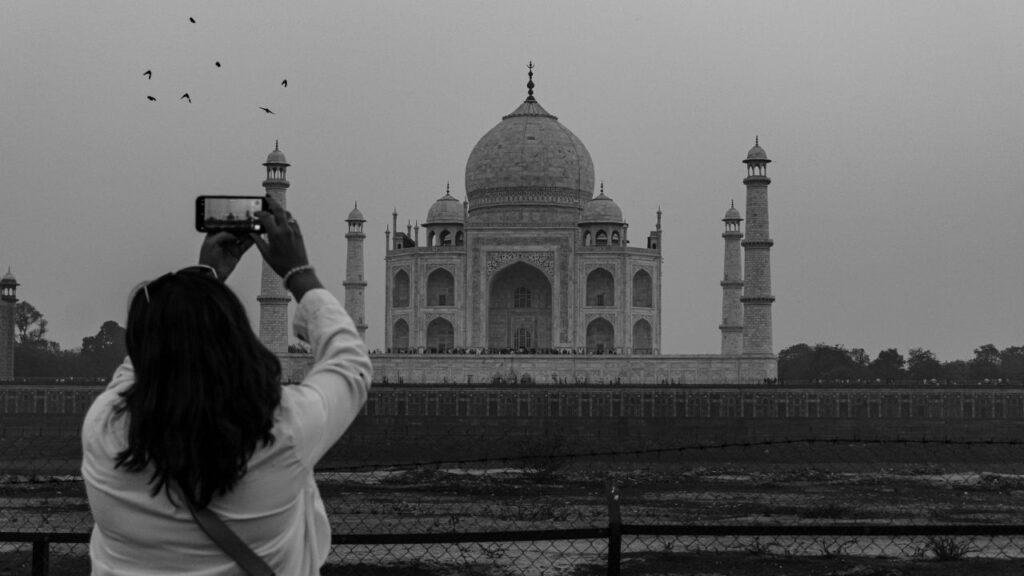
The Taj Mahal’s universal appeal lies in its ability to be both grand and intimate. For international tourists, it is a bucket-list destination, a symbol of India’s rich history. For locals, it is a source of pride, a reminder of their nation’s cultural legacy. Yet, regardless of where they come from, visitors engage with the Taj in deeply personal ways.
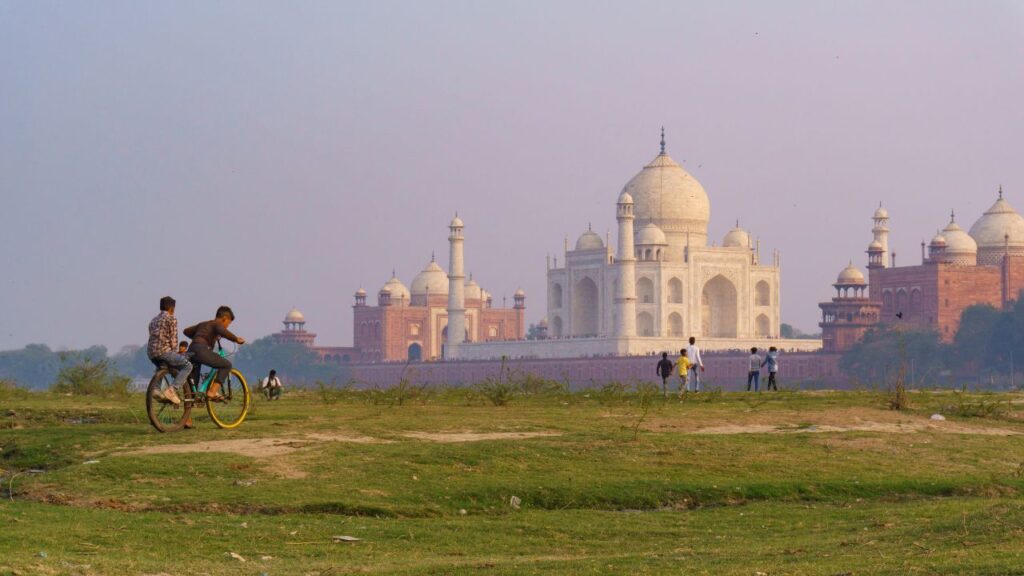
A foreign tourist might marvel at its architectural precision, while an Indian family might see it as the culmination of a long-planned journey. The monument accommodates these diverse narratives, becoming a mirror for the emotions and aspirations of those who visit.
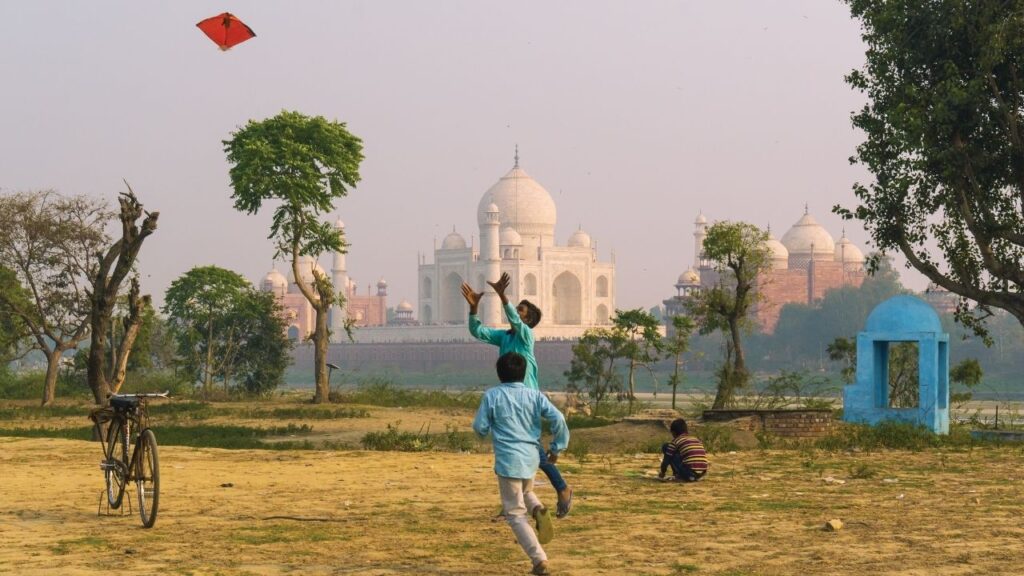
In documenting the people at the Taj Mahal, one sees not just a monument but a microcosm of humanity. The laughter, the poses, the quiet moments of reflection. All unfold against a backdrop that has stood for centuries. The Taj is a place where memories are made, where the ordinary meets the extraordinary, and where a single photograph can encapsulate a lifetime of dreams. “Taj Mahal nahi dekha toh kya dekha” is more than a saying; it is an invitation to experience, to connect, and to carry home a piece of wonder. For those who visit, the Taj Mahal is not just seen. It is felt, lived, and remembered.


